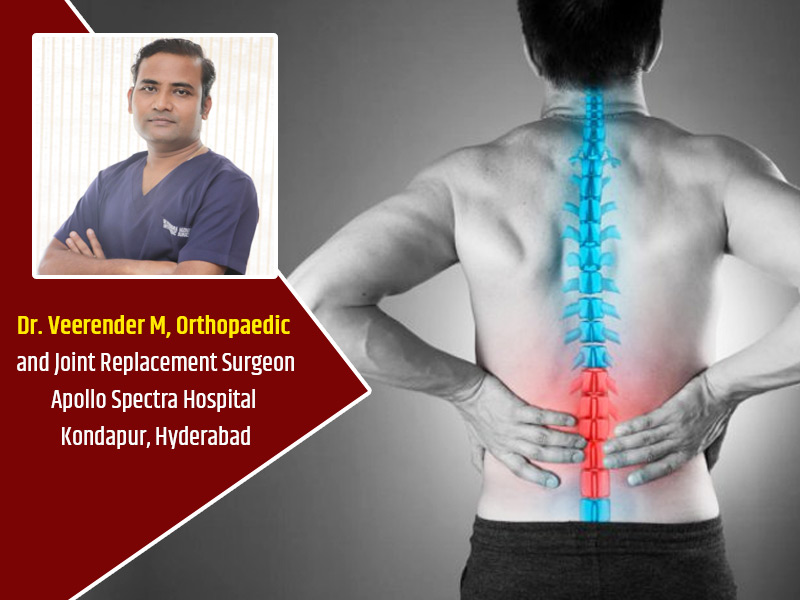
Bone health plays a major role in maintaining the overall health of an individual. Lately, it has become a concern as studies have shown that one out of every three women and one out of every five men aged 50 suffers from an osteoporotic fracture. The older population is more susceptible to osteoporosis whereby the experience is painful owing to the lack of vitamin D in the bones. It causes low bone density giving rise to several other complexities associated with our health. Osteoporosis is a medical condition in which the bones get weak and porous, and even a mild push or fall can cause a fracture. Irrespective of the gender, it can happen to anyone, while women are at a higher risk of adapting to the condition post their menopause.
There are several risk factors like unhealthy lifestyle and eating habits, body structure, family history or any attained health conditions, and so on. Usually, the symptoms go unnoticed, and they can only be diagnosed with a proper medical screening or an X-Ray. World Osteoporosis Day is celebrated on 20th October, every year to raise global awareness about the prevention, diagnosis and treatment of osteoporosis. On World Osteoporosis Day 2021, Onlymyhealth editorial team spoke to Dr. Veerender M, Orthopaedic and Joint Replacement Surgeon, Apollo Spectra Hospital Kondapur, Hyderabad, about the symptoms, causes and treatment for osteoporosis.
Osteoporosis symptoms

In most cases, osteoporosis goes unnoticed and is discovered when the weakened bones cause painful fractures. The most common type of fracture is to the hip, wrist, or spine. However, a few of the early symptoms of this ailment may include:
- Receding gums
- Brittle nails
- Weak grip strength
Also read: Osteoporosis: Causes, Symptoms, What Food Items To Eat And Avoid? Know From Nutritionist Abhilasha V
Causes of osteoporosis
With increasing age, everyone is at risk of developing osteoporosis. However, postmenopausal women or those who are 50 and above, have a higher risk as they suffer fast bone loss for the first 10 years after entering menopause. Even men above the age of 50 have high chances of experiencing osteoporosis-induced bone break. A number of factors can increase the chances of developing osteoporosis, including your age, race, underlying medical conditions, and treatments. Some of the other major risk factors for osteoporosis, that can be avoided are as follows:
1. Sedentary lifestyle
People who tend to have a very sedentary lifestyle with a lot of sitting and sleeping are at a higher risk of osteoporosis than those who have an active lifestyle. Exercise helps in bone development, and lack of exercise and an active lifestyle increases the risk of losing calcium from the bones and in turn developing osteoporosis.
2. Unregulated consumption of tobacco and alcohol

Tobacco is known to directly affect the bones. Among females, it tends to lower the estrogen level and may lead to early menopause, which is one of the most common risk factors for osteoporosis among the gender. In men, smoking reduces testosterone activity, which can weaken the bones. Consumption of an unregulated amount of alcohol lowers the body’s ability to make bone and repair itself in case of a fall.
3. Increased dependency on steroids
Steroids are commonly used to treat various inflammatory conditions including arthritis. But if the steroids are used for a long period of time it affects the density of bone because of the amount of calcium absorbed from the gut and increases calcium loss through the kidneys.
Also read: World Osteoporosis Day 2021: 7 Myths & Facts About Osteoporosis That You Must Know About
Easy Tips To Manage Osteoporosis
According to Veerender M, here are easy tips to manage osteoporosis:
1. Regular exercise regimen
Simple exercise and cardio exercises such as walking, running, and aerobics make the bones and attached muscles work against gravity - this adds stress on the skeleton, which helps in strengthening bones and improves muscle mass.

2. Including the right amount of Protein, Calcium, and Vitamin D in the diet
It is imperative to make sure the body is getting a sufficient amount of protein, calcium, and vitamin D when suffering from osteoporosis. Whole foods like lean meats, fish, eggs, beans, legumes, dairy products, contain high amounts of calcium and vitamin D, and they are essential nutrients for good bone health.
3. Regular checkups
Periodic medical screenings and checkups are essential to examine the bone density and identify the right bone health. While depending upon the severity of the condition, medical experts can recommend medication or can also suggest surgical procedures depending on the severity of the condition.
Also watch this video
Read Next
Loss Of Sensitivity In Limbs? Here Are Symptoms And Complications of Numbness You Should Know
How we keep this article up to date:
We work with experts and keep a close eye on the latest in health and wellness. Whenever there is a new research or helpful information, we update our articles with accurate and useful advice.
Current Version